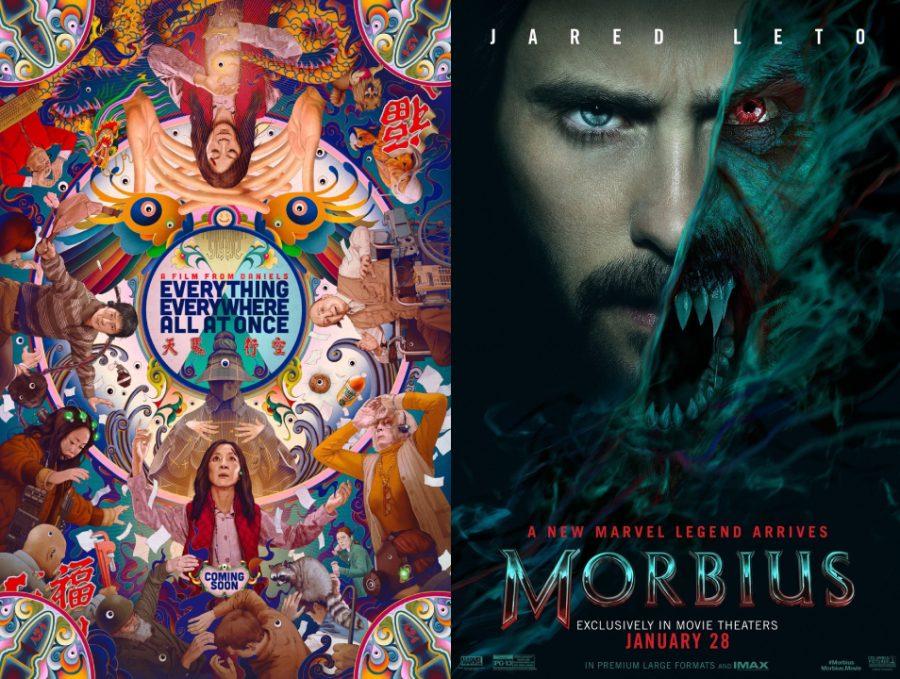With massive-budget blockbusters taking hold of the box office, independent films seem to occupy fewer theaters. This, coupled with lower sales could spell the end of variety in cinema.
The COVID-19 pandemic brought about a complete shift in the film industry. Distributors could no longer rely on box office sales and theaters to rake in revenue for their films. Subsequently, they turned to streaming services and smaller general releases in order to have their films seen by wider audiences. Today, moviegoing is less popular than ever, with 49 percent of pre-pandemic moviegoers no longer attending multiplex theaters. A grim statistic with even darker implications for the industry at large.
In March 2022, Amazon acquired MGM in an $8.45 billion deal that took almost a year to close. The acquisition gives Amazon ownership of over 4,000 films and all subsequent films MGM purchases. However, the possible ramifications of such a deal could mean there may be one less studio willing to distribute a movie that isn’t a high-budget blockbuster or another adaptation of an existing property. While Amazon did go on record to state that the reason for their purchase was due to MGM’s extensive catalog of films and capacity for remakes, the executives at MGM face an uphill battle with the difficult merger ahead.
While these two events are completely isolated, when placed together they paint a bleak picture for the future of film. Not only is it getting harder to release a film as an independent filmmaker not associated with any pre-established franchise or IP, but it’s also getting harder to get people to even want to see it. If that wasn’t enough, what infrequent consumer bases and the acquisition of major distributors and producers from tech giants mean is that fewer risks want to be taken on $50 million and under budget films. Even as more films return for grander-scale theatrical releases, the current state of the market has only seemed to reflect this point further.
The review embargo for Sony’s newest $80 million entry in the extensive Marvel universe “Morbius” ended only two days before public screenings began, an already poor sign for what would become one of the worst box office debuts for Marvel since the release of “The New Mutants.” Early critic reviews called the film “disjointed” and “boring.” Others lamented that it was “about as bad as you were expecting.” On most accounts, the film was a complete disaster and yet another blemish on Marvel’s troubling track record spanning 65 films.
Just a week prior to “Morbius” came the newest film from directors Daniel Kwan and Daniel Scheinert “Everything Everywhere All at Once.” Made with a lean $25 million budget, the film debuted to near-unanimous praise and performed incredibly-strong numbers on its first days. It’s currently the highest-rated film on Letterboxd, a popular film charting app, and on its opening night, the film grossed $509.6K. An average of $50,965 per theater, it is the second-best post-pandemic platform release behind “Licorice Pizza,” and the best opening theater average in 2022 at the time. While all of that may sound great on paper, there is just one small issue: despite initial projections and performances from both films, at the time of writing this, “Morbius” has made almost double its budget since its release, and “Everything Everywhere All at Once” has barely broken even.
By many accounts, Morbius is a failure. The film is cluttered with heaps of storytelling issues, an unlikeable protagonist, and above all else, the entire picture is just mind-numbingly boring. To top it off, it also features one of the most disorienting, nonsensical, and uninteresting post-credits scenes in any Marvel film; a post-credit scene that had already been spoiled in its own trailer. Yet, the box office numbers say otherwise. It’s made millions of dollars back and will likely continue to do so, despite near-universal hatred from critics. On the corporate side of things, which to exhibitors is the only important part, the film is a complete success. So where is the discrepancy? Why does this happen and continue to happen again and again?
As is with most complex issues, there are multiple answers to this troubling dilemma. On nearly every competitive front, adaptations and superhero blockbusters hold the market advantage. No exhibitor is off-limits and the current social climate promotes cult-like fan behavior. These distinct advantages are not only recognized by corporations, but they’re also consistently abused in order to achieve the highest gain.
Fan-Loyalty
To begin, despite their closeness in release dates, it’s a bit unfair to compare “Morbius” to “Everything Everywhere All at Once.” Ignoring the fact that they are radically different films, they also cater to completely-different audiences. Marvel fans are not particularly difficult to please. Look at the audience score on Rotten Tomatoes for any low, critically-rated Marvel film and you’ll be hard pressed to find an audience score below 70 percent, with one of the few exceptions being Captain Marvel: a film, which was infamously panned by fans due to the unfavorable casting of Brie Larson. That aside, most superhero adaptations have an edge due to the sheer number of die-hard fans willing to watch and likely rewatch their entire catalog of comic-book adaptations. Put simply, it’s significantly easier to sell something to someone who’s already bought it before.
Likewise, it’s difficult to tease out the casual from the fanatical in franchises like these. These films are intended for general audiences, and therefore means that there are more chances for people to become engrossed in the overarching series as a whole. These movies are made to be incredibly marketable, inoffensive, and overall easily consumable. This is an edge that most other filmmakers just don’t have unless their work is genre-specific and lacking nuance. Even in the case of “Everything Everywhere All at Once,” the term “multiverse” had to be used in its marketing campaign extensively in order to capitalize on the term Marvel had just popularized thanks to “Spiderman: No Way Home.” However, in that sphere, the film held the risk of potentially compromising its creative integrity. While it is a film about multiverses, it feels unjust to call it a multiverse film. That said, a lot of advertising choices like these are not always left up to the filmmakers themselves and have a lot to do with currently-available distributors.
Lack of Distributors and Exhibitor opportunity
Despite giving a lot of independent filmmakers a chance, A24 is not very good at doing one of its core jobs: being a distributor. Recall that “Everything Everywhere All At Once” premiered in only 10 theaters, and while it certainly performed well in those few, it’s a meager number compared to the thousands comic-book films enjoy on their opening nights. While it is c
urrently still expanding to more theaters thanks to its initial popularity, it only got that after proving itself to audiences first, which is something that adaptations simply don’t need to worry about doing. Exhibitors just don’t feel comfortable taking risks anymore, especially post-pandemic. However, not all the blame can be placed on them. A24 is also not amazing at getting the word out either, mainly driving their presence through social media, which causes a lot of their core fans to be younger. While this isn’t necessarily a bad thing it does hinder the success of films intended for mature audiences.
Cultural Bias
Another major piece of current film industry politics can be accurately understood through the behavior of the masses. There simply is just not as much buzz for low-budget films as there is for $100 million blockbusters among general audiences. Disney has managed to create a cultural phenomenon: a phenomenon that also happens to be incredibly profitable not just for them, but for their exhibitors as well. Their films are considered a special social event. Every few months, like clockwork, we always encounter the craze the next “Avengers” flick conjures up, and then it’s time to gather all your friends and fill up an entire row at the theater.
Even for people who are only mildly interested in these types of films it’s almost socially taboo not to occasionally watch, or at the very least follow up on them lest you experience alienation and “FOMO” from your peers who have already resigned themselves to such behavior.
So what does this boil down to? Are we seeing the death of “true cinema” in theaters as we know it? Perhaps the answer is not all that simple. Many enjoyed poking fun at Scorsese’s comments toward the MCU, including Spider-Man poster child Tom Holland himself, but his words are often misunderstood in the greater context of film. When you compare films like “Morbius” to “Everything Everywhere All at Once,” it’s significantly easier to understand what the director truly meant. There is no art in a film like “Morbius.” In fact, it’s a prime example of what it’s like to watch something that gives the bare minimum. Despite this, no amount of public shaming could make the film any less watchable, even for morbid curiosity’s sake. For now, let’s move past the clearly-elitist implication of denoting a film as “real art” and think about things in a more nuanced fashion.
These superhero films and adaptations in general occupy their own space in the industrial complex that is cinema. In a strange way, they’ve almost evolved past their original state. They’re not just movies; they’re serialized, recognizable products. While it is true that not every film needs to have some ingenious method of creation behind it or a rich and complex storyline, it would be nice to have that every once in a while. It would be even nicer to have that actually played at a local theater as well. Therein lies the true crux of the argument Scorsese put forward. The bleak possibility is that we could see a lack of variety in theaters due to low box office turnout and unwilling exhibitors.
The current film scope is a lot wider than most make it out to be, and those who do take the time to showcase its truly-vast breadth are largely ignored. Perhaps, we should more often ask ourselves if what we are watching is really worth any of our time at all, because when we inevitably reach a burnout of overly-commercialized media, what really will be left? Cinema is not dead, despite what some may want to claim. However, it does need some avenging. What we can do as consumers in the current modernization of the film market is be, at the very least, somewhat conscious of what we choose to watch. Despite being such a revered and successful occupation, very little attention is ever given to artists who are on the rise. Right now, independent artists are the small businesses of the film market. On your next theater bout or Netflix browsing session, why not choose that one weird indie film with the unknown actors and obtuse premise. Perhaps, you’ll surprise yourself with what people are capable of when they finally have a chance.
Images courtesy of IMDb and Metacritic
Essay: Are We Watching the Death of Variety in Theaters?
May 1, 2022
3
0
About the Contributor

Fabian Garcia, Senior Staff Writer
“logophile [ law-guh-fahyl ]
noun
1 a lover of words.”
More to Discover










Melissa Dorn • Oct 12, 2023 at 5:24 am
Thanks for interesting post
Maknatash • Jun 10, 2022 at 3:04 pm
Yes, I am a good writer, I often write essays at the request of my supervisor. But on the other hand, I’m the same person. Like everyone, I have difficult days. So I can’t clap my hands and give out some unrealistic information. Sometimes you have to ask for help. In this matter, https://studentshare.org/ definitely helps me out, because it offers great options for creations. Here you can order everything – from a simple essay to a research paper.
Disney Fan • May 1, 2022 at 10:08 pm
Hey just so you know starting in 10 theaters is a normal thing, it’s called a platform release. La La Land, Uncut Gems and other films all did it before the release. A24 just advertising on social media seems to be bad thing to you but what about the Northman? It’s for a mature audience and Focus had lots of tv ads but it will not make as much money was Everything. Just food for thought!